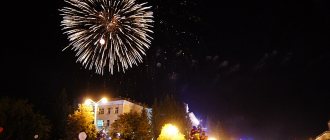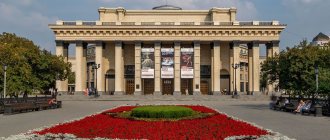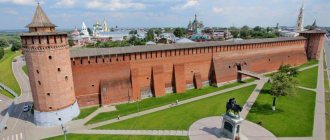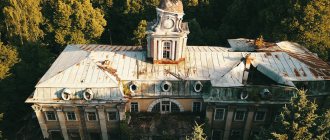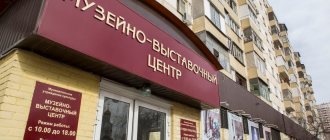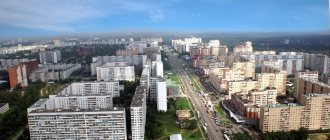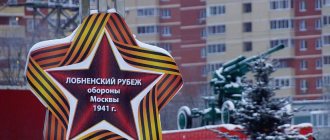History is nearby
Where can you find out everything about the history of the city you live in or where you are visiting? In the Mytishchi Historical and Art Museum. It's easy to find. The establishment is located on the street. Mira, 4. The museum was created in 1962. Today there are 7 halls with a solid permanent exhibition and two halls with temporary ones.
The permanent exhibition part is represented by two sections:
- historical;
- artistic.
Temporary exhibitions are updated every 2 months.
Visitors can explore the riches on their own or as part of excursions. The museum offers the following programs:
- overview of the entire museum;
- reflection of the city in literature;
- folk crafts that developed in Mytishchi (the famous Zhostovo, Fedoskovo);
- the history of Mytishchi, which dates back at least 6 thousand years;
- historical estates where famous writers and artists lived and worked (Nikolo-Prozorovo, Marfino, Rozhdestvenno-Suvorovo);
- halls of the artist V. Popkov, poets D. Kedrov and N. Glazkov.
The collection of the Mytishchi Museum of Local History contains more than 8 thousand items. Among them there are unique exhibits - a lacquer miniature of Fedoskino, trays made by Zhostovo, extremely well-preserved bricks produced at a local factory in the 19th century, and archival materials.
Fascinating educational interactive programs dedicated to the traditions of tea drinking, the history of the Vyatichi and Krivichi people who inhabited these places, and the culture of painting human faces in paintings in the old days.
The museum in Mytishchi is open on Sunday, Wednesday and Saturday from 10:00 to 18:00, and on Thursday from 12:00 to 20:00. Days off are Monday and Tuesday. On its birthday (December 4), the museum opens its doors to everyone completely free of charge.
Mytishchi Historical and Art Museum
The museum opened on December 4, 1962. Since 1987, the museum has been located in a separate building (on the ground floor). The permanent exhibition is housed in seven halls, and rotating art exhibitions are organized in two more. The main part of the current exhibition, with partial changes and additions, has existed since 1987.
Hall 1 - Historical. Archaeological finds from various monuments of the Mytishchi region can be found in the first hall of the museum. The history of the region goes back centuries. Within the city of Mytishchi there is the ancient village of Taininskoye (formerly Toninskoye), known since the beginning of the 15th century, - the hereditary patrimony of the great Moscow princes and Russian sovereigns, which served as their country residence. This village near Moscow was the favorite estate of Ivan the Terrible, one of the centers of the oprichnina. Tsar Alexei Mikhailovich often visited here on his way to a pilgrimage to the Trinity-Sergius Lavra, relaxing in a specially built “travel palace.” The museum's exhibition presents materials on the medieval history of the Mytishchi region.
Documentary materials tell about the construction of the first Moscow gravity water supply system (1779–1804), which gave the capital excellently tasty drinking water from the famous Mytishchi springs, which were abundant in the upper reaches of the river. Yauza.
Hall 2 - the exposition of the second hall of the museum is dedicated to the estates of the Mytishchi region, preserving the memory of famous figures of Russian history and culture of the 18th–20th centuries. The palace and park complex of the Marfino estate is unique in its beauty, which at different times belonged to representatives of noble aristocratic families - the Golitsyns, Saltykovs, Panins. The writer and historian N.M. visited the estate. Karamzin, poets I.I. Dmitriev, V.L. Pushkin.
The Nikolskoye-Prozorovskoye and Rozhdestveno-Suvorovo estates belonged to the family of the outstanding commander A.V. Suvorov. The poet and hero of the War of 1812, D.V., lived and wrote his memoirs in Myshetskoye. Davydov. The fabulist I.A. spent two years in Vinogradov. Krylov, V.N. was also here. Tatishchev, G.R. Derzhavin, many writers of the late 18th - early 20th centuries. The Vitenevo estate was owned by M.E. for 15 years. Saltykov-Shchedrin, who worked here on the works “The History of a City”, “The Golovlevs” and others. N.A. visited the writer. Nekrasov, I.S. Turgenev, A.N. Pleshcheev, publisher A.S. Suvorin. The creative activity of the outstanding theater director K. S. Stanislavsky (Alekseev) began on the Lyubimovka estate. A.P. Chekhov worked here on the play “The Cherry Orchard.” Stay in Mytishchi L.N. Tolstoy is reflected in the novel “War and Peace”. In Mytishchi, famous artists V.G. worked on their classic paintings. Perov (“Tea drinking in Mytishchi near Moscow”, “Rural religious procession for Easter”) and V.I. Surikov (“Boyaryna Morozova”).
Hall 3 - the exposition of the third hall of the museum clearly represents the history of Mytishchi at the end of the 19th - beginning of the 20th centuries. The attention of visitors is attracted by one of the first exhibits of the museum - a painting by the artist V. Zotov, who captured the village of Bolshaya Mytishchi in 1875, as well as the canvas by A. Solovyov “Mytishchi Station in 1888”. A unique collection of bricks with stamps tells about the history of the first Mytishchi brick factories. Authentic documents present the history of the Mytishchi Carriage Works and MMZ), the founders of which were S.I. Mamontov, K.D. Artsybushev, A.V. Bari. Collection of postcards from 1911–1914. has preserved the picturesque views of the former holiday village, founded at the end of the 19th century. famous tea traders Perlov.
Hall 4 - the historical section of the exhibition ends with the hall of the Great Patriotic War (1941–1945), which tells about the exploits of the Mytishchi residents in this difficult and heroic time. Many materials are related to the battles on the Lobnensky line of defense of Moscow in November–December 1941.
Hall 5 - in the halls dedicated to the culture and art of the Mytishchi region, artistic castings, souvenirs, as well as folk arts and crafts are presented. In the Mytishchi district there are two world-famous centers of Russian folk art - Fedoskino and Zhostovo, which have a two-century history. Fedoskino lacquer miniature (Fedoskino) - colorful boxes, caskets, Zhostovo metal trays, decorated with floral arrangements unique in grace and color evoke a feeling of admiration (Zhostovo).
Hall 6 - memorial halls of poets Dmitry Kedrin and Nikolai Glazkov, where personal belongings, rare publications, and manuscripts of poets are presented. It also contains books by contemporary Mytishchi poets who are members of the LITO named after Dm. Kedrina.
Hall 7 is a memorial hall-workshop of the artist Viktor Popkov, opened in 1989. It contains works of art, including sketches for the most famous paintings - “Builders of the Bratsk Hydroelectric Power Station”, “Two”, personal belongings of the painter.
Art Gallery
Its area is more than 400 m2. The art gallery is located in Mytishchi, on Novomytishchi Avenue 36/7. It was opened in 2007. Paintings by artists who lived or at some time worked in Mytishchi made up the main fund. It contains more than 2,000 works of art.
The gallery attracts attention with its active social and educational activities: up to 25 projects are held within its walls every year. Exhibitions telling about Russian folk crafts, meetings with artists and master classes are interesting.
The museum is open from 11:00 to 19:00 on Wednesdays and Fridays, on Thursdays from 12:00 to 20:00, and on weekends from 10:00 to 17:00.
Museums in Mytishchi
Bebeshka.info » Entertainment in Mytishchi » Museums
Find museums near me
Sort by rating
by name
Brewhouse
- Volkovskoe highway, vl12
- Fri-Sun 12:00–20:00
- View on map
Category
: Museums
Zhostovo trays
- Zhostovo village, Ryabinovaya street, 7A
- +7 (495) 5…Show phone
- View on map
Category
: Museums
Moscow Regional Museum of Folk Art Crafts
- Fedoskino village, Lukutinskaya street, b7
- +7 (964) 6…Show phone
- Wed-Sun 09:00–18:00
- View on map
Category
: Museums
Museum of the Zhostovo Decorative Painting Factory
- Zhostovo village, Divnaya street, bldg. 15
- +7 (495) 5…Show phone
- daily, 09:00–17:00
- View on map
Headings
: Gift and souvenir shop, Museums, Children's excursions
Museum-Gallery Fairytale World of Nadezhda Strelkina
- Fedoskino village, Lukutinskaya street, 21B
- +7 (909) 9…Show phone
- Wed-Sun 11:00–17:00
- View on map
Headings
: Gift and souvenir shop, Museums
Museum-memorial complex History of the T-34 tank
- Sholokhovo village, 89A
- +7 (495) 5…Show phone
- Tue-Sun 10:00–18:30
- View on map
Category
: Museums
Mytishchi Art Gallery
- Novomytishchisky prospect, 36/7
- +7 (498) 7…Show phone
- Wed 11:00–19:00; Thu 12:00–20:00; Fri 11:00–19:00; Sat, Sun 10:00–17:00
- View on map
Headings
: Children's exhibitions, Museums
Mytishchi Historical and Art Museum
- Mira street, 4
- +7 (495) 5…Show phone
- Wed 10:00–18:00; Thu 12:00–20:00; Fri-Sun 10:00–18:00
- View on map
Category
: Museums
Petrushkina Sloboda
- Vladimirskaya street, 10D
- daily, 09:00–19:00
- View on map
Headings
: Museums, Theaters
K. Sokolov Falconry Center
- Lyskovo village, Central street, 32
- +7 (917) 5…Show phone number
- daily, 10:00–18:00
- View on map
Headings
: Horse clubs, Museums
Ecological and educational center Tea Party in Mytishchi
- Vodoprovodnaya Alley, 1
- daily, 10:00–17:00
- View on map
Headings
: Museums, Children's excursions
Einstein Museum [Closed]
- Kommunisticheskaya street, 1
- +7 (985) 9…Show phone
- Tue-Sun 12:00–20:00
- View on map
Category
: Museums
Mytishchi Museum of Nature Conservation [Closed]
- Novomytishchisky Avenue, 19
- +7 (495) 5…Show phone
- Mon-Fri 10:00-18:00
- View on map
Category
: Museums
List of museums in Mytishchi. Automatic search for nearby organizations. Addresses and telephone numbers, brief descriptions of establishments with operating hours and links to their official websites. For your convenience, all organizations are presented both on the map and in the form of a rating.
Physics is exciting!
It turns out that physics may not be boring, but, on the contrary, fascinating in its diversity. One has only to look into the Einstein Museum (Yaroslavskoye Highway, shopping center XL-3, third floor).
Although the museum exhibition appeared recently, in 2016, it has already become a favorite of both adults and children. To make it clearer and more interesting for visitors, they are accompanied by a guide who will tell in detail about each exhibit in all sections of the museum, and this is:
- Mechanics;
- electromagnetism;
- natural phenomena;
- health;
- Molecular physics.
Children usually have many questions: why doesn’t the bike fall? Is it possible to create a perpetual motion machine, and how? Is it possible to shout over the noise of a rocket going into space? Why does soapy water lather and create bubbles? All this and much more can be found in the museum.
Thematic excursions are offered for different age groups:
- for the little ones it will be interesting to travel through the sections of physics, which turns out to be an entertaining and interesting science;
- The story about the significance of the developments of physicists during the Great Patriotic War is aimed at older children;
- how physics influences records and Olympic achievements.
A huge plus of the museum is that you can touch everything in it with your hands!
The Einstein Museum is open from noon to 8 p.m. Closed on Monday.
All about nature
Another museum (Mytishchi) is dedicated to nature conservation. It is located on the street. Mira, no. 19.
The museum, created more than 20 years ago, displays 5 thousand exhibits. These are samples of the fauna and flora of the area. Here you can find out what animals and birds lived in the Mytishchi region 200 or more years ago, how glaciers affected the terrain, what reservoirs provide water to the townspeople today, which areas are protected and the state of the city’s ecosystem. The museum's collection of bird eggs is the most complete in the Moscow region. It helps to get to know better the birds that live near humans today.
Visiting the museum is free, photography is permitted. The establishment is open from 9:00 to 18:00, on Saturday – until 17:00. Day off is Monday.
Cup holder as an object of cultural heritage
This is exactly how the owner of a private museum in Mytishchi, S. Kruglov, views glass holders. Over the course of 10 years, he collected more than 2 thousand exhibits. Among them are not only a variety of glass holders, but also everything related to tea drinking traditions: strainers and teaspoons, tea storage jars and samovars, bouillottes, boxes and much more.
The exhibits are arranged in sections:
- by the type of material from which the cup holders are made;
- by decor;
- by manufacturer;
- unusual in shape and size, as well as gift items.
Attention is paid to the role of cup holders, which they played not only in everyday life, but also in cinema.
Every day, the owner of the museum gives a tour about the traditions of tea drinking and tells funny stories about the museum’s exhibits, which are listed in the Guinness Book of Records. Museum address: st. Blagoveshchenskaya, 9. The museum is open from noon to 17:00. Days off are Monday and Tuesday.
Attractions
Mytishchi, st. Tsentralnaya, 1. Directions: MKAD-turn to Mytishchi-ul. Trudovaya st. 1st Krestyansky St. Vera Voloshina – st. Krasny Poselok – st. Central; inside the city No. 2.7, route. taxi number 12.
A wonderful monument of Moscow church architecture. Founded in 1675 under Tsar Alexei Mikhailovich, consecrated in 1677 under Tsar Fyodor Alekseevich
Church of the Annunciation of the Blessed Virgin Mary. 17th century
Church of the Annunciation. XVII c.
The royal residence in the village of Taininskoye
1401–1402. The history of the ancient village of Taininsky, which entered the city of Mytishchi, is inextricably linked with the rulers of the Moscow Principality, and then with the sovereigns of All Rus'.
In 1380, in the battle on the Kulikovo field, together with Prince Dmitry Donskoy, the fate of the fatherland was decided, commanding an ambush regiment, by a talented military leader, the prince’s cousin Vladimir Andreevich, nicknamed Serpukhovsky. Among his possessions, received as a reward for the victory of the Russian army, the village of Taininskoye is mentioned for the first time, which during the 15th century was the center of a vast volost.
1481 The village of Taininskoye was inherited by the future Grand Duke Vasily III, the son of the Great Moscow Prince Ivan III the Great. From that time on, it belonged to the great princes and kings. Located on the road to the spiritual
the center of Russia - the Trinity-Sergius Monastery - Taininskoye became the country residence of the Moscow sovereigns, where grand-ducal chambers for recreation were erected.
During the time of the cruel ruler, reformer, first Tsar of All Rus' Ivan IV the Terrible, the village was repeatedly chosen as the venue for important state meetings. After the conquest of Kazan in 1552, the sovereign
stopped in Taininsky before the ceremonial entry into Moscow, where ambassadors were introduced to him and messengers were sent. Over time, Taininskoye becomes one of the oprichnina.
1605 In the terrible “time of troubles”, when the fate of the country’s independence was being decided, the village of Taininskoye became the center of the most important historical events.
Here the fateful meeting of False Dmitry I took place with the nun Martha, the wife of Ivan IV, Maria Naga, who was tonsured a nun. Martha recognized the impostor as her surviving son, Tsarevich Dmitry, after which False Dmitry was crowned in the Assumption Cathedral of the Kremlin for a short reign.
The troops of the new impostor, who approached Moscow in June 1608, were unable to gain a foothold in Taininsky and founded a camp in the village of Tushino, for which False Dmitry II was known as the “Tushino thief.”
1612 Russia's subordination to foreign invaders did not last long. A nationwide militia gathered to liberate Moscow. Militia troops led by Prince Dmitry Pozharsky and the “elected man” Kuzma
The Minins moved from Yaroslavl through Rostov, Pereyaslavl and the Trinity-Sergius Monastery to Moscow, making a halt before the decisive battle in the village of Taininsky.
1677 The first sovereigns from the Romanov family - Mikhail Fedorovich and Alexei Mikhailovich - took care of their estate in Taininsky, where they often stopped on their way to pilgrimage to the Trinity-Sergius Monastery.
Hunts with falcons and gyrfalcons were organized here. There were “royal mansions” in the village.
In 1675-1677, the Church of the Annunciation of the Blessed Virgin Mary, unique in its architecture, was erected.
Thanks to the efforts of parishioners and contributors, many Orthodox relics were collected in the temple. The preserved temple now appears before us as the architects intended it in the 17th century.
1749–1823. By decree of Peter II, Taininskoye was given to the daughter of Peter I, Empress Elizaveta Petrovna. The Empress visited here often and willingly. Under her, in 1749, a palace was built, rich outbuildings were built, and orchards were laid out. Its owner, Empress Catherine II, repeatedly celebrated her birthday in her beloved Taininsky. For a long time, the palace adorned the ancient village, until a fire on September 21, 1823 destroyed it.
1996 In memory of all the autocrats of Rus', a monument to the last monarch Nicholas II was erected on the palace island of the village of Taininsky. Its author was the famous Russian sculptor V.M. Klykov.
You can learn more about the history of the village of Taininskoye at the Mytishchi Historical and Art Museum.
You can learn more about the history of the temple on its official website:
https://www.tayninskoye.ru/stranitsy-istorii/o-hrame.html
Tsar's Residency in the Taininsky Village
1401 – 1402. The history of the ancient Taininsky village found in the territory of Mytischi town is bound up with the kings of Moscovia and the monarchs of All Russia. A talented commander, the cousin of the prince, Vladimir Andreevich, also nicknamed Serpukhovsky, together with the prince Dmitry Donskoy shaped the fatherland's destiny in 1380 during the Battle of Kulikovo. They commanded a regiment that attacked the enemy from an ambush. The Taininsky village, which was a center of a large peasant community throughout the duration of the XV century, was first mentioned among Vladimir's possessions that were received in reward for the victory of the Russian forces. 1481. The Taininsky village was inherited by the Grand Prince to be Vasilii III, the son of the Grand Prince of Moscow Ivan III the Great. Since that time it was owned by the Grand Princes and Tsars. Located on the way to the spiritual heart of Russia, ie, Troitse-Sergiev monastery, the Taininsky village became the Moscow monarchs' country residence with grand-ducal rooms to rest in. In the time of the cruel ruler, reformer and the first Tsar of All Russia, Ivan IV the Terrible, the village was chosen as a venue of important state visits. Following the seizure of Kazan in 1552 and before his solemn arrival to Moscow, the monarch remained in the Taininsky village, where he was introduced to the ambassadors and sent heralds. The Tainisnky village eventually became one of the centers of the special “monarchic principality”, namely Oprichnina. 1605. During the frightful “Time of Troubles”, when the independence of the country was at stake, the Taininsky village became a center of important historical events. A meeting of False Dmitry I with nun Marfa, the wife of Ivan IV, Maria Nagaya, previously admitted to the veil, took place in this village. Marfa acknowledged the impostor as her surviving son prince Dmitry, following which False Dmitry was crowned in the Cathedral of the Assumption in the Moscow Kremlin for a short period of time. The troops of the new impostor that approached Moscow in June of the year 1608 were unable to fortify their position in the Tainisky village and built their camp in Tushino village. This is why the False Dmitry II was given a nickname “Tushino Thief”. 1612. The subjection of Russia to the foreign interventionists was not long. To liberate Moscow, the national voluntary military forces were assembled. Troops of the citizen-solders, led by the prince Dmitry Pozharsky and the “elected person”, Kuzma Minin set out from Yaroslavl
through Ristov, Pereyaslavl and Troitse-Sergiev monastery to Moscow and halted in Taininsky village before the decisive battle. 1677. The first monarchs from the Romanov dynasty, Mikhail Fedorovich and Aleksei Mikhailovich took care of their patrimony located in the Taininsky village, where they often stopped on their way to Troitse-Sergiev monastery during their pilgrimage. Hunting with falcons
and gyrfalcons was arranged here. The “Tsar's palace” was also located in the village. The Church of the Annunciation, which is unique in terms of architecture, was built here in 1675-1677. Due to the endeavors of the congregation and investors, numerous Orthodox relics were stored in the church. Nowadays, the extant church appears exactly the same as it was planned by architects in the 17th century. 1749 – 1823. By the order of Pyotr II, the Taininsky village was granted to the daughter of Pyotr I, the empress Elizaveta Petrovna. The empress often visited this place with pleasure. During the rule of Elizaveta Petrovna, rich utility structures were constructed around the palace
and orchards were planted in 1749. When Catherine II the Great was owner, she celebrated her birthdays repeatedly in her favorite place, the Taininsky village. The palace embellished the ancient settlement for a long period of time until a fire happened on September 21st, 1823, which destroyed it. 1996. The monument to the last monarch Nicolay II was built in honor of all Russian autocrats on the palace area of the Taininsky village. It was sculpted by the famous Russian sculptor VMKlykov.

